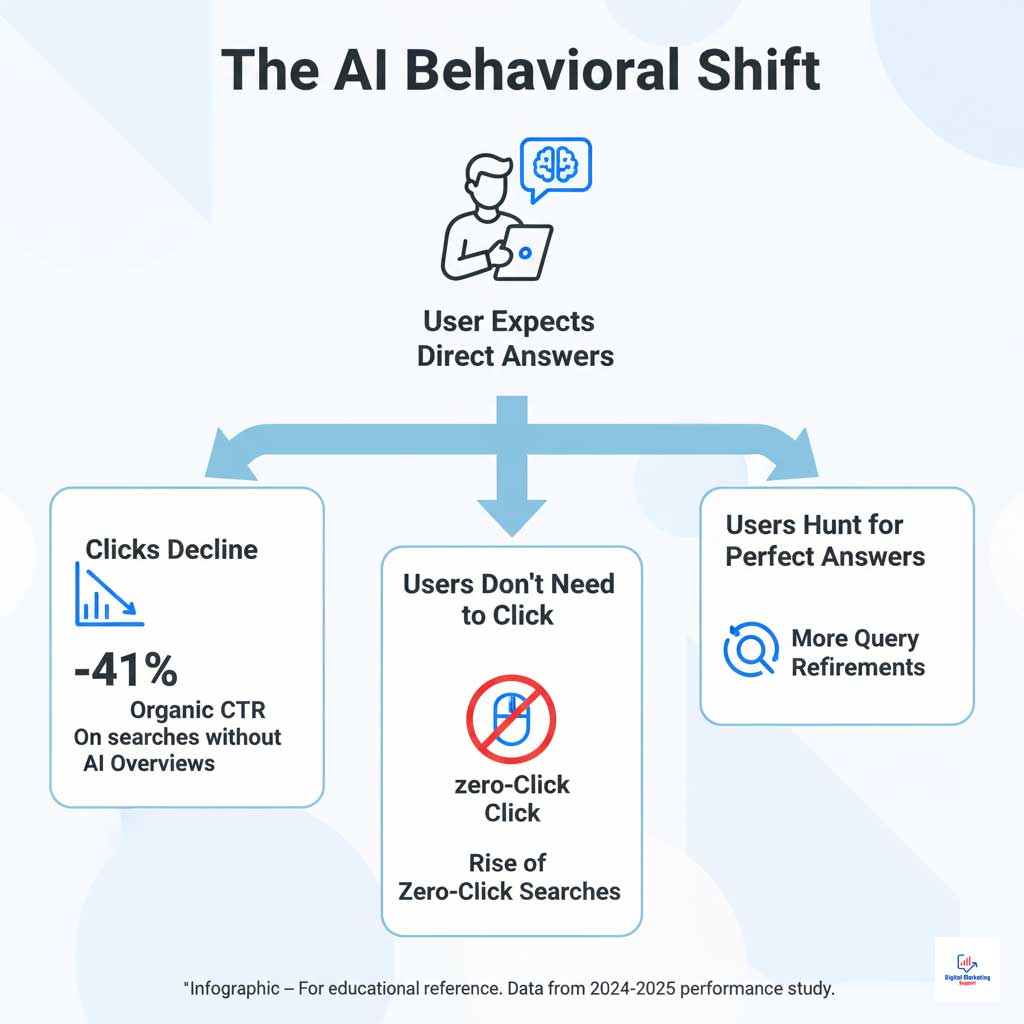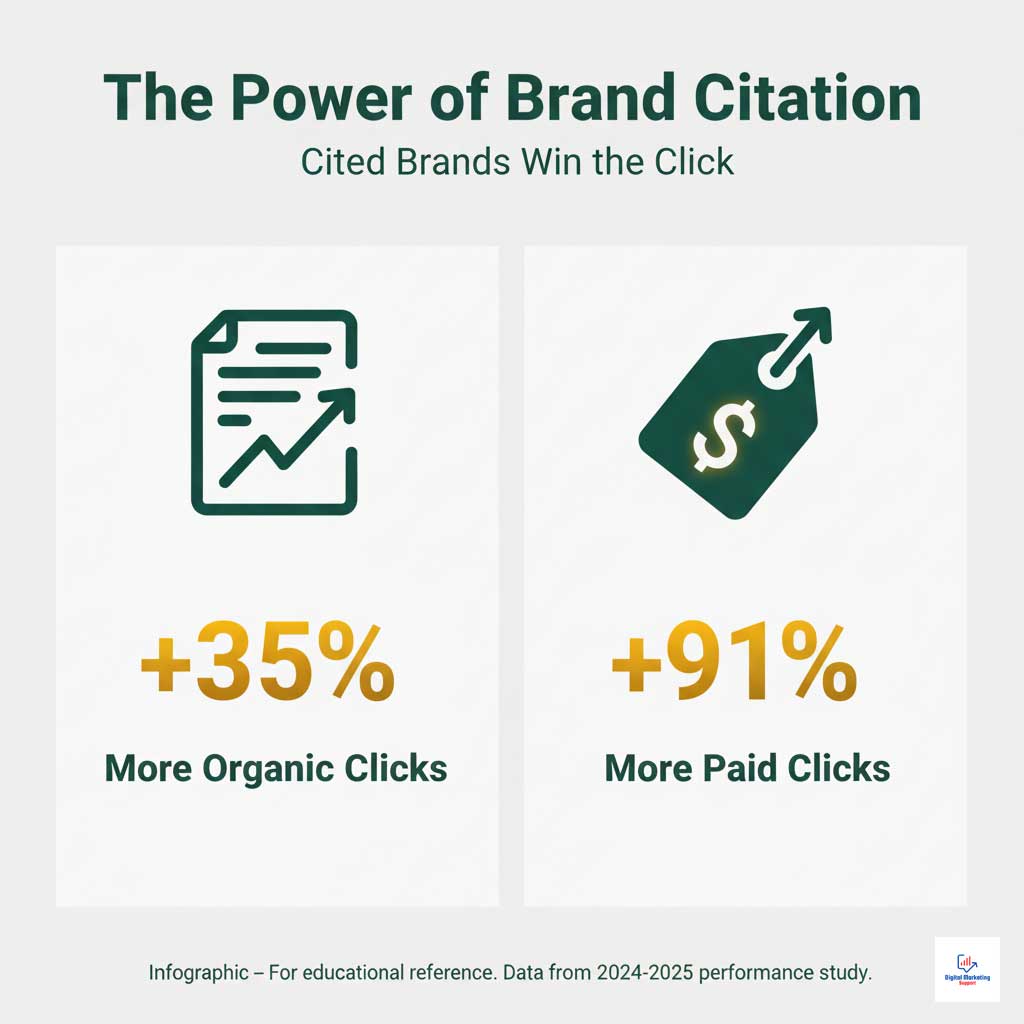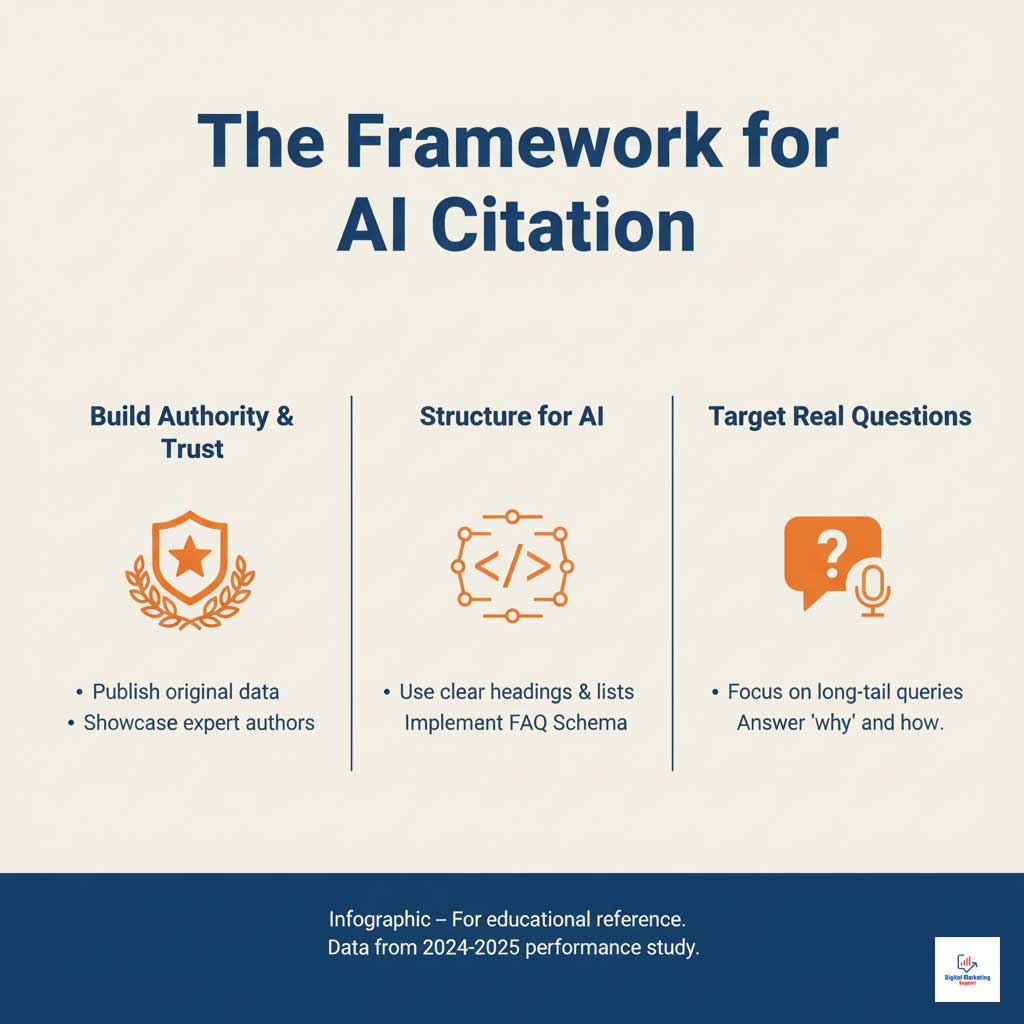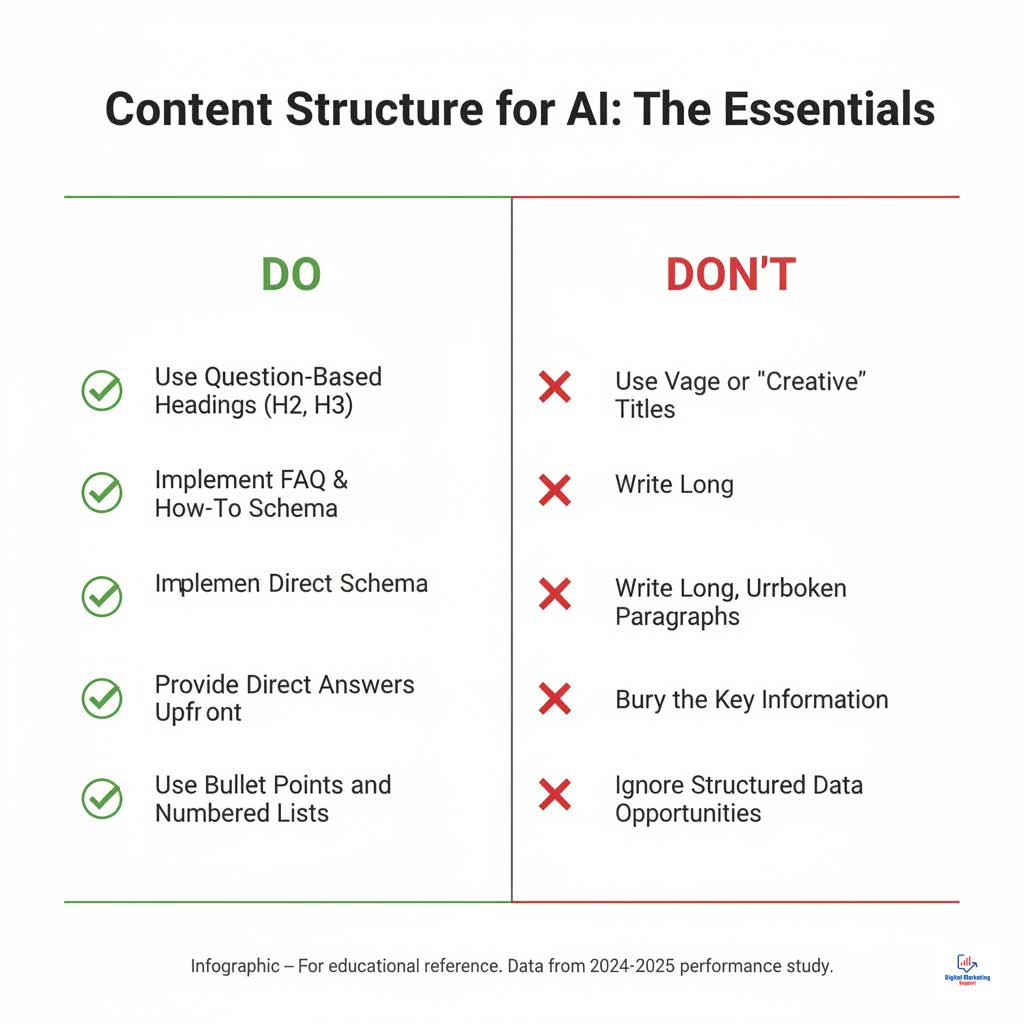For more than a decade, the game was simple: get your blue link to the top of Google’s search results. That single-minded focus drove entire industries, shaped marketing budgets, and defined digital success. Now, that game has been completely upended. The widespread 2024-2025 rollout of Google AI Overviews is the primary catalyst for this monumental change. New data from a landmark performance study now confirms what many marketers have feared: traditional click-through rate (CTR) metrics are in a state of freefall.
Table of Contents

This analysis unpacks the findings from a comprehensive study covering 25 million impressions from June 2024 to September 2025. It reveals the staggering organic CTR decline and its parallel impact on paid advertising, which has sent shockwaves through the industry. More importantly, this article uncovers the new key to search success in this era, achieving “brand citation” within AI-generated answers, and provides a strategic framework for adapting your SEO to not just survive, but to thrive.

The Core Concept: What Are Google AI Overviews and Why Do They Matter?
The familiar page of ten blue links is quickly becoming a relic. At the top of many search results now sits a new, powerful element that is fundamentally reshaping how users find information. This is the new reality of AI in search results, and understanding it is the first step toward mastering it.
Defining the New SERP Landscape
Google AI Overviews, formerly known as the Search Generative Experience (SGE), are AI-generated summaries that appear directly at the top of the search engine results page (SERP). Their purpose is to provide a direct, consolidated answer to a user’s query, pulling information from multiple trusted sources.
This represents a fundamental disruption because it shifts Google’s primary function. The platform is rapidly evolving from a “search engine” that points you to other websites into an “answer engine” that aims to satisfy your intent without you ever needing to leave the page. This shift is powered by generative AI and large language models (LLMs) designed to synthesize information and present it as a finished product.

The End of the “10 Blue Links” Era
This new model has a profound psychological impact on search behavior. Users are quickly being trained to expect instant, summarized answers rather than a list of links they must investigate themselves. This learned behavior is directly responsible for the dramatic decline in blue link clicks across the board.
The trend is accelerated by the growing influence of alternative platforms. The ChatGPT effect on search has conditioned millions of users to engage in conversational Q&A, while the rise of social search disruption on platforms like TikTok and Instagram has trained a new generation to expect quick, visual, and direct answers. These external forces have created the perfect environment for Google AI Overviews to flourish, further diminishing the value of a traditional organic ranking.
The Data Uncovered: Quantifying the Massive Impact on CTR Metrics
The shift isn’t just theoretical; it’s backed by startling new data. The performance study, which analyzed 3,119 informational queries across 42 U.S. organizations, paints a clear and urgent picture of the new challenges facing digital marketers.
The 61% Collapse in Organic CTR
The most significant finding is the severe organic CTR decline. For informational query CTR, the average click-through rate has plummeted from a pre-AIO average of 1.76% to just 0.61% when an AI Overview is present. This represents a staggering 61% decrease in organic traffic for affected keywords.
The reason is simple: Google AI Overviews occupy the most valuable real estate on the SERP, pushing the traditional organic listings significantly below the fold. By providing a seemingly complete answer at the top, the user’s need to scroll and click is often eliminated.
Paid Advertising’s Diminishing Returns: The 68% Paid CTR Decline
The damage is not limited to organic results. The study revealed an equally concerning paid CTR decline, with paid ads appearing alongside AI Overviews seeing their CTR plunge from 19.7% to a mere 6.34%. This 68% freefall is a direct threat to the ROI of many paid search campaigns.
This Google Ads performance drop occurs because user attention is immediately captured and held by the AI-generated summary. Paid ads, which rely on visibility and a compelling call-to-action, struggle to compete for a user’s focus when a detailed, credible answer is presented just above them.
The Shockwave Effect: Why Clicks Are Down 41% Even Without AI Overviews
Perhaps the most telling statistic from the study is that even queries without an AI Overview experienced a 41% drop in organic CTR. This indicates that the change is not just algorithmic; it is behavioral.

This is a critical insight into current USA search trends. Users are now conditioned to be more efficient and less “click-happy.” Their interaction with Google AI Overviews on some queries is reshaping their behavior on all queries, leading to more zero-click searches and query refinements as they hunt for the perfect answer.
The New SERP Currency: Unpacking the Power of Brand Citation
In the midst of this widespread CTR collapse, a new and powerful factor has emerged as the single most important element for success: brand citation. While overall clicks are down, brands that are explicitly named as sources within Google AI Overviews are not just surviving; they are capturing a larger share of the remaining traffic.
What is “Brand Citation” in AI Overviews?
A brand citation occurs when Google’s AI model explicitly names and links to a brand or website as a source for the information presented within its generated summary. These citations can appear as small, clickable source cards or as inline links directly within the text of the overview.
Achieving a brand citation is the ultimate signal of trust and authority in the modern SERP. It is a direct endorsement from Google’s algorithm, telling the user that your website is a credible source for the answer they are seeking.

The Performance Multiplier: How Citations Drive Clicks Against the Trend
The performance data for cited brands is nothing short of remarkable. In a landscape defined by declining engagement, earning a brand citation acts as a powerful performance multiplier.
- Organic Traffic Boost: Brands cited in an AI Overview receive, on average, 35% more organic clicks than non-cited URLs appearing on the same SERP.
- Paid Advertising Synergy: The effect is even more pronounced for paid campaigns. Cited brands see up to 91% more paid clicks on their ads, as the citation provides a powerful, third-party validation that makes the ad seem more relevant and trustworthy.
This data makes it clear that AI search optimization is no longer optional. The goal has shifted from simply ranking to becoming the authoritative source that Google’s AI trusts and references. This is the new foundation of effective search visibility strategies.

Comparison Table: Cited vs. Non-Cited Performance in an AI-Driven SERP
The difference in performance is stark. This table summarizes the critical advantages of earning a citation in the new search landscape.
| Performance Metric | Brand Cited in AI Overview | Brand Not Cited in AI Overview | Key Takeaway |
| Average Organic CTR | +35% vs. Non-Cited URLs | Baseline (experiencing decline) | Citation acts as a powerful trust signal that reverses the downward CTR trend. |
| Average Paid CTR | +91% vs. Non-Cited URLs | Baseline (experiencing steep decline) | A citation provides third-party validation, making the associated ad seem more credible and relevant. |
| Perceived Authority | Very High | Low to Moderate | The brand is positioned as an expert source directly by Google’s AI. |
| Likelihood of Zero-Click | Lower | Higher | Users are more likely to click a cited source to get deeper information or verify the summary. |
A Practical Framework: Actionable Strategies to Earn AI Citations
Understanding the problem is only half the battle. Adapting SEO for declining Google CTR metrics requires a deliberate and strategic pivot. The following framework provides actionable strategies focused on the ultimate goal: earning that coveted brand citation.

Pillar 1: Build Unshakeable Topical Authority and Trust
Google’s AI is designed to prioritize information from sources that demonstrate deep, verifiable expertise. This goes far beyond old-school SEO tactics and requires a genuine commitment to becoming a trusted authority in your niche.
- Demonstrate First-Hand Experience: Publish detailed case studies, share original research, and incorporate unique insights from your own work. This creates a content footprint that cannot be easily replicated.
- Showcase Expertise: Ensure all content is credited to authors with clear credentials and comprehensive bios. Use author schema to signal this expertise directly to search engines.
- Build Authoritativeness: Actively seek mentions and backlinks from other reputable sites in your industry. Consistently publish high-quality, in-depth content that establishes your site as the go-to resource.
- Guarantee Trustworthiness: Be transparent with your sourcing. Link out to credible data, cite your sources clearly, and maintain an up-to-date and factually accurate website. This is a critical component of optimizing for AI-driven ranking factors.
Pillar 2: Structure Content for AI Comprehension
AI models do not “read” content in the same way humans do. They parse it for structure, meaning, and key data points. Optimizing content for Google’s AI-driven SERP means making it as easy as possible for the AI to understand and use your information.
- Use Clear, Semantic HTML: Employ a logical heading structure (H1, H2, H3, H4) to organize your content. Ensure your main topic is in the H1, with subtopics clearly delineated in H2s and H3s.
- Answer Questions Directly: Use question-based headings that align with common user queries. Craft concise, direct answers immediately following the heading.
- Leverage Structured Data: Implement FAQ and How-To schema wherever relevant. This provides a clear, machine-readable format that Google’s AI can easily pull from to construct an answer.
- Use Lists and Tables: Break down complex information into bulleted lists, numbered steps, and simple HTML tables. This scannable format is ideal for AI models looking to extract key facts and processes.

Pillar 3: Target Conversational and Long-Tail Queries
AI Overviews are most often triggered by complex, conversational, or question-based searches. Aligning your content strategy with these query types is essential for increasing your chances of being featured.
- Research “People Also Ask”: Use the “People Also Ask” boxes on Google SERPs as a goldmine for relevant long-tail questions your audience is asking.
- Monitor Community Forums: Websites like Quora and Reddit are invaluable for discovering the nuanced, conversational ways real people ask questions about your topics.
- Build Comprehensive Resource Pages: Create long-form content that answers a primary long-tail question in depth while also addressing dozens of related secondary questions. This positions your page as a one-stop-shop for the topic.
Table: Evolution of SERP Ranking Factors
The core focus of SEO has evolved significantly. Understanding this evolution helps clarify why brand citation and authority are the cornerstones of modern SERP trends 2025.
| Era | Primary SEO Focus | Key Tactics | User Goal |
| Classic Era (2005-2015) | Keywords & Backlinks | Keyword stuffing, link building, on-page SEO. | Find a relevant webpage. |
| Semantic Era (2016-2023) | User Intent & Rich Snippets | Topic clusters, structured data, mobile-first design. | Find a quick, rich answer. |
| Generative AI Era (2024+) | Authority & AI Citation | Demonstrable expertise, original data, structured content for AI, Share of Voice. | Get a definitive answer without leaving Google. |
Summary & Key Takeaways: Thriving in the New Age of Search
The introduction of Google AI Overviews has irrevocably altered the search landscape. The data is clear: the era of relying on high volumes of clicks from organic and paid search is over. The massive organic CTR decline and the parallel paid CTR decline are not temporary fluctuations; they are the new normal.

However, this disruption has paved the way for a new, more meaningful measure of success. The future of SEO and digital marketing does not belong to those who can simply rank, but to those who can earn the trust of Google’s AI. Brand citation is now the primary currency of the SERP. The path forward requires a deep and unwavering commitment to building genuine topical authority, structuring content for AI consumption, and shifting the way we measure success. Instead of obsessing over clicks, we must now focus on visibility and share of voice marketing. By embracing these principles, brands can navigate the challenges of AI in search results and emerge as the recognized leaders in their field.
Frequently Asked Questions (FAQs)
Why did organic CTR decline so much after Google’s AI Overviews rollout?
Organic CTR declined primarily because AI Overviews provide direct answers at the very top of the SERP, satisfying user intent without requiring a click. This pushes traditional blue link results further down the page, significantly reducing their visibility.
How can my brand get cited in Google AI Overviews for better visibility?
Focus on creating expert-driven, authoritative content. Publish original data, use structured data like FAQ schema, demonstrate first-hand experience, and answer conversational queries directly and clearly.
Are paid ad campaigns still effective with the AI-driven drop in CTR?
Yes, but their role is shifting. While raw CTR has dropped, ads appearing alongside a relevant AI Overview where your brand is also cited see a massive boost in performance. Their effectiveness now relies more on building brand trust and visibility than on generating direct clicks alone.
What metrics should I track in the new AI-powered search landscape?
Shift your focus from clicks to visibility metrics. Track impressions in Google Search Console, “Share of Voice” (how often your brand appears for key terms), and the number of times your brand is cited in AI Overviews. These are the new Google Search metrics that matter.
Has Google’s AI Overview changed SEO best practices for 2025?
Absolutely. SEO in 2025 is less about keyword density and more about topical authority, structured data, and creating content that directly and authoritatively answers user questions. Optimizing for AI citation is now a core practice.
What are the biggest challenges for marketers after Google implemented AI Overviews?
The biggest challenges include the steep drop in organic traffic, accurately measuring ROI with fewer clicks, and the increased difficulty of standing out on a SERP dominated by AI-generated summaries.
Which types of businesses gain most from AI citations on Google?
Businesses that publish in-depth, data-driven, and expert-led content in informational niches (like finance, health, and B2B tech) are best positioned to gain from AI citations, as these are the areas where Google’s AI seeks authoritative sources.
How to adapt content for AI-driven SERP results and higher brand mentions?
Adapt content by writing in a clear, concise, and factual tone. Use FAQ and How-to schema to structure your answers. Prioritize publishing original research, case studies, and unique insights that AI models will value as a primary source.
What’s causing the drop in Google clicks even for queries without AI Overviews?
This is attributed to a change in user behavior. As users become accustomed to receiving direct answers from AI on some queries, they are beginning to expect it for all queries, leading to more “zero-click searches” or query refinements rather than immediate clicks on blue links.
Can authority-building improve my chances of AI citation in Google?
Yes, it is the most critical factor. Authority, demonstrated through comprehensive content, expert authors, backlinks from reputable sites, and consistent, high-quality information, directly signals to Google’s algorithms that your site is a trustworthy source for its Google AI Overviews.
What is the impact of social search disruption on Google’s SERP?
The rise of search on platforms like TikTok and Instagram has trained users, particularly younger demographics, to prefer visual, quick, and direct answers. This behavior translates to Google, where users are now less patient and more likely to be satisfied by an AI Overview instead of clicking through to a webpage.
What are some examples of brands benefiting from AI citation?
While specific brand names change, industry leaders known for publishing original research reports (e.g., major financial institutions, market research firms, and top-tier health information sites) are frequently cited. They benefit by becoming the go-to source for statistics and definitions in their field.








